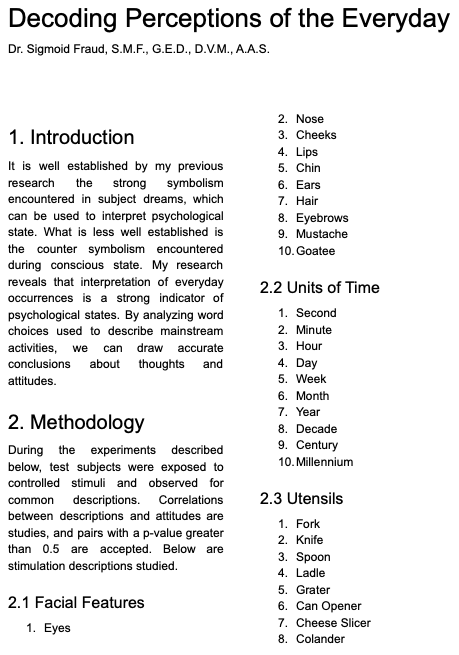Code-Word Lookup
For the code-word lookup puzzle, players need to put together two clues. The first clue is the message itself. But the message alone does not have any real meaning. To get the meaning, the players need to put the message together with a second clue containing a list of code words and their meaning (which may just be a digit for a numeric password).
Here is an example I have used. The players find an old diary with the following entry.
Dear Diary,
Today was the best Day of my life. I met the man of my dreams: Todd. We met at the park. He was walking his ferret. I was hiding in the bushes. He is sooooo cute with his pouting Lips and big brown Eyebrows. I didn’t have the courage to talk, but I did find out where he lives. Tomorrow, we’ll “meet” again. I’ll bring Mr. Knife for luck.
This message alone does not provide anything of value. However, in another box the players find this page from a scientific psychology paper.
Most of the text of this “paper” is nonsense. The important part is the enumerated lists provided. To solve the puzzle, the players have to match words in the diary message to the listed words in the paper and use the associated numbers to build the passcode. (The message inappropriately capitalizes these words to help players make this connection and pick out the appropriate words.) The words to pick out are “Day”, “Lips”, “Eyebrows”, and “Knife”, which correspond to the digits 4, 4, 8, and 2, respectively. Thus, the passcode is 4482.
A variant of this method is the crossword lookup where instead of providing the code-word lookup in a list, it is hidden in a crossword puzzle.
